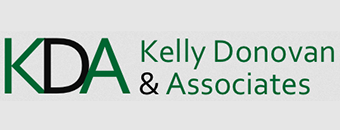3 reasons to join more groups on LinkedIn
If you’re like most of my clients, you might be a member of a half dozen or dozen LinkedIn groups.
I’d argue that you should join more than that, even if you don’t plan to participate in discussions in the groups.
Now that LinkedIn allows users to join up to 100 groups, why not join 20, 30, or 40 groups? Or more?
Here are the top 3 reasons you should consider doing this:
- The more groups you’re in the more visibility you’ll have on the platform. Not sure what I mean? Well, have you ever seen someone on LinkedIn where it just said “LinkedIn Member” and didn’t have the person’s name or photo? That happens when someone is out of your network (not a first, second, or third degree connection). And guess what? When they see you on LinkedIn, they’re seeing the same thing on their end. You’ve been reduced to a mere “LinkedIn Member” undeserving of a name. But, if you’re both members of a group, you’ll be able to see each other. This means you’ll show up properly in search results.
- As a group member, you have access to information, resources, and discussions related to your industry. If co-workers or your boss are suspicious about your LinkedIn activity, thinking you’re job-hunting, you’ve got an excuse! You can mention some of the things you’ve learned about from your LinkedIn groups, or simply weave into conversation that you’re doing a number of things to research trends, including reading trade pubs, attending industry events, and following LinkedIn group discussions.
- And finally, groups do have some intrinsic value…sometimes. While some are a waste of time, some of the discussions can be interesting and helpful. Just make sure your comments are professional; even if you think you’re in a closed, private group, that can change (and the past conversations can then come up in Google search results…such as when someone searches for your name on Google).
If any of that resonated, you might be wondering: which groups are the best to join?
LinkedIn groups I recommend joining include:
- Groups related to your industry or profession. Don’t nit-pick; if you’re in procurement and you spot a logistics and supply chain group, I’d say that’s close enough. After all, some of the executives that could be your future boss might be in that group!
- Alumni groups. Please bear in mind that this is different from simply following your alma mater on LinkedIn, which happens automatically when you list a degree from a university on your profile. That gives you the university’s updates, but not the benefit of being “connected” (in a sense) to all those other alumni.
- Large general interest groups. These are good simply for the sheer volume of people in them. A good example is Harvard Business Review, which I joined many years ago (but I think their group might be full now).
- Local groups for your local market or markets of interest. If you’re in Southern California, for example, there are LinkedIn groups for Orange County, Los Angeles, etc. Some of them also do off-line events where you can go and network with other group members in person.
Just keep in mind that you can adjust your email preferences for group emails so your inbox doesn’t get clogged with emails from LinkedIn groups as you start to join more of them.
Almost every client I work with is missing opportunities by not belonging to as many LinkedIn groups as they could. Remember: group membership is free, except in the rare cases where the group is created by a group that exists in the offline world and charges membership dues—in which case the membership might be restricted to their paying members. So take advantage of this (almost-always) free resource!
This article first appeared on www.KellyDonovan.com



